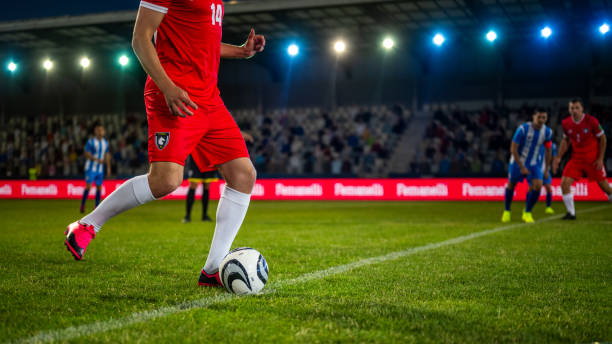In the rapidly evolving world of football, one of the most significant transformations over the

Women’s Football: Breaking Barriers and Shaping the Future of the Sport
Women’s football has experienced a remarkable transformation over the past few decades, evolving from a marginalized pastime to a globally celebrated sport. This progress has not only increased visibility and participation but also challenged and changed societal perceptions about women in sports. This article delves into the rise of women’s football, its impact on the sport as a whole, and the ongoing journey toward equality and recognition.
The Growth of Women’s Football
The journey of women’s football from obscurity to the global stage is a testament to resilience and determination. Here’s a look at the key milestones and factors driving this growth:

- Historical Context:
- Women’s football dates back to the late 19th century, but it faced significant societal and institutional barriers. For much of the 20th century, women were discouraged or outright banned from playing football in many parts of the world.
- The lifting of bans, such as the English FA’s reversal in 1971, marked the beginning of a new era, gradually paving the way for organized competitions and greater acceptance.
- Major Tournaments:
- The inaugural FIFA Women’s World Cup in 1991 and the inclusion of women’s football in the Olympics in 1996 were pivotal moments. These events provided a global platform, showcasing the talent and excitement of women’s football to a wider audience.
- The UEFA Women’s Champions League and other continental competitions have further contributed to the sport’s development, offering regular, high-quality competition.
- Rising Popularity:
- The 2019 FIFA Women’s World Cup in France shattered viewership records, drawing over 1 billion viewers globally. This tournament highlighted the growing interest and support for women’s football.
- Domestic leagues, such as the National Women’s Soccer League (NWSL) in the USA and the FA Women’s Super League (WSL) in England, have seen increased investment, attendance, and media coverage.
The Impact on the Sport
The rise of women’s football has had a profound impact on the broader football landscape:
- Inspiration and Role Models:
- Female footballers like Marta, Megan Rapinoe, and Ada Hegerberg have become global icons, inspiring young girls worldwide to pursue their dreams in football and beyond.
- Their stories of overcoming adversity and achieving greatness resonate beyond the pitch, promoting values of perseverance, equality, and empowerment.
- Economic and Commercial Growth:
- The commercial potential of women’s football is increasingly being recognized. Sponsorship deals, broadcast rights, and merchandise sales are on the rise, contributing to the sport’s financial viability.
- Brands are keen to associate with the positive and progressive image of women’s football, further driving investment and growth.
- Advancements in Coaching and Development:
- Improved coaching, facilities, and support systems are elevating the standard of play. Academies and grassroots programs are now dedicated to nurturing female talent from a young age.
- National and club teams are investing in scientific approaches to training, health, and performance, narrowing the gap with their male counterparts.

Challenges and the Road Ahead
Despite significant progress, women’s football continues to face challenges that need to be addressed:
- Equality and Recognition:
- Pay disparities, unequal access to resources, and limited media coverage remain pressing issues. Efforts to close the gender gap in football are ongoing, with players, advocates, and organizations pushing for parity.
- Achieving equal representation and respect in all aspects of the sport, from boardrooms to commentary booths, is essential for true equality.
- Sustainability and Investment:
- Ensuring the long-term sustainability of women’s football requires consistent investment at all levels. Financial backing from both public and private sectors is crucial to maintain and grow the sport.
- Building robust domestic leagues and supporting grassroots initiatives will create a solid foundation for future generations.
- Cultural and Social Barriers:
- Societal attitudes and cultural norms still pose barriers in many regions. Advocating for gender equality and challenging stereotypes are vital to expanding opportunities for women in football globally.
- Education and awareness campaigns can help shift perceptions and encourage more girls to take up the sport.

Conclusion
Women’s football is not just a sport; it is a movement that embodies the fight for equality, empowerment, and recognition. The remarkable strides made in recent years are a testament to the dedication and passion of players, coaches, fans, and advocates worldwide. As we celebrate the achievements and progress of women’s football, we must continue to support and invest in its future. By breaking barriers and challenging norms, women’s football is not only shaping the future of the sport but also inspiring a more inclusive and equitable world.
The beautiful game is for everyone, and the rise of women’s football is a powerful reminder that the future of football is bright, diverse, and full of possibilities. Let’s keep the momentum going and ensure that the next generation of female footballers has the opportunity to shine even brighter.
Recent Posts
While the spotlight often shines on elite clubs and world-renowned players, the foundation of football’s
Women’s football has experienced a remarkable transformation over the past few decades, evolving from a
Test BlogTest BlogTest BlogTest BlogTest BlogTest BlogTest BlogTest BlogTest BlogTest BlogTest BlogTest BlogTest BlogTest BlogTest


